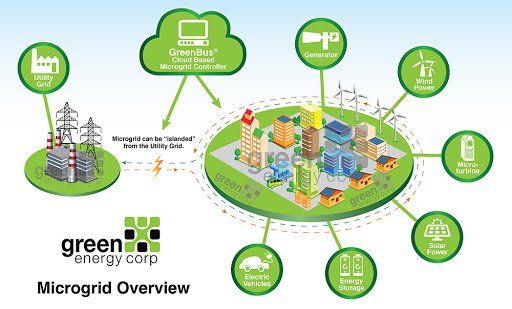Analysis of Governor Kate Brown’s climate change Executive Order (20-04)
Daphne Wysham, Nick Caleb and John Talberth • Mar 23, 2020

A Positive Direction: Governor Kate Brown’s Executive Order (EO) is breaking with the carbon market-based approach of the past and is instead pursuing a declining cap on Oregon’s emissions on an emergency, science-based timeline.
Needs Improvement: The EO’s targets and timetables are neither ambitious nor comprehensive enough. The EO leaves out the single largest source of greenhouse gas emissions in the state, the timber industry. It omits any mention of public transportation, nor does it mention the need to rapidly phase out fracked gas and biomethane hookups in homes and buildings. The EO gives insufficient attention to the carbon drawdown potential and critical role Oregon’s forest and farmlands can and should play in advancing an ambitious climate agenda. The EO is limited in its scope by virtue of the limited regulatory authority of the various agencies tasked with acting on the EO.
On March 10, 2020, Oregon Governor Kate Brown released an executive order, EO 20-04, that lays out the goals for Oregon’s climate response on an emergency timeline. The EO states: “This Executive Order establishes science-based GHG emissions reduction goals, and calls for the State of Oregon to reduce its GHG emissions (1) at least 45 percent below 1990 levels by 2035, and (2) at least 80 percent below 1990 levels by 2050.”
While the document references the importance of science-based targets and timelines, the document gets the actual science wrong. According to the most recent Paris climate goals, we need to markedly enhance our ambition with annual targets, not decadal ones, and shoot for a global average temperature increase that does not exceed 1.5 degrees Celsius, not 2 degrees Celsius, as this EO references.
7.6% Annual Greenhouse Gas Emissions Reductions Targets Required Now
The United Nations Environment Program issued a report in November 2019 calling for at 7.6 percent annual decline in greenhouse gas emissions by 2030 in order to avoid exceeding the 1.5 C target of the Paris Accords. In addition, the IPCC states, “limiting warming to 1.5°C implies reaching net zero CO2 emissions globally around 2050 and concurrent deep reductions in emissions of non-CO2 forcers, particularly methane.” Every year matters, and to delay annual sharp declines in emissions between 2020 and 2030 is to ensure a rise in temperatures of 3.2 C which would be catastrophic. In addition, Gov. Brown’s EO references a 45% drop in emissions below 1990 levels by 2035 and an 80 percent overall reduction by 2050 which is inconsistent with the current climate science.
Timber Industry, Not Counted, is State’s Largest Emitter

The report repeats the false claim that the transportation sector is the single largest source of greenhouse gas emissions in the state. Yet recent scientific studies have shown that the timber industry is the single largest source of greenhouse gas emissions in the state and transportation is second largest.
Transportation Sector: Carbon Intensity Reductions Not Equivalent with Absolute GHG Reductions
Additional questionable targets include a reduction in the greenhouse gas emissions intensity of fuels by 20 percent below 2015 levels by 2030. Again, the UN has made it clear that we need to reduce greenhouse gas emissions by 7.6% overall annually between 2020 and 2030. Reducing the carbon intensity of transportation fuels by 25 percent below 2015 by 2035 does not equate to an annual drop in overall greenhouse gas emissions in this sector. For example, if Oregon’s vehicle miles driven were to double by 2035, decreasing the carbon intensity of that travel by 25 percent would still result in an overall increase in greenhouse gas emissions of 50 percent.
Furthermore, assuming Oregon’s population stays constant and vehicle miles traveled stays constant (which is unlikely), a 25 percent reduction below transportation-related emissions levels from 2015 (which were 23MMT CO2e) by 2035 would translate to roughly 17 million metric tons of CO2e by 2035 for Oregon’s transportation sector. However, an annual target of 7.6% reduction in GHG emissions for Oregon would result in a drop of transport-related emissions from 23 MMTCO2e to roughly 10MMT CO2e by 2030 and roughly 6.5 MMT CO2e by 2035, a difference of over 10.5 MMT CO2 by 2035 over the EO’s target.
The EO makes reference to “clean fuel credits,” which would allow fuel producers to bank credits for later use at a time when annual and absolute emissions reductions are necessary. Given the potential for gaming of such a credit trading system, CSE recommends against this approach.
Importantly, the EO makes no mention of the need for enhanced, rapid public transportation options, and free or low-cost public transportation options for low-income communities and youth.
Building Sector: No New Gas Hookups Now
Gov. Brown’s EO sets a 2030 goal for Oregon’s buildings, with three-year intervals for interim assessment. Yet over the past four years, Oregon has seen the use of natural gas grow faster in our homes and buildings than in any other state (a 9% increase between 2015 and 2017 according to Energy Information Administration data). This gas is used for space and hot water heating, as well as cooking. The EO also includes a statement on the potential for transitioning fracked gas to “renewable natural gas” (or biomethane) sources. However, a recent study from the Oregon Department of Energy found that only 10-20% of the state’s existing demand could be met by potential biomethane sources. And continued dependence on methane–whether sourced from fracking or biomethane–for our state’s energy needs is not what is called for at a time when we need to reduce emissions by 7.6% annually. We need to minimize biomethane as much as possible. Creating economic opportunities for its consumption and proliferation runs the risks of further leaks from transport and infrastructure, with significant climate forcing impacts.

To start the process of tackling these rapidly growing emissions, which could also represent a stranded cost for households and businesses, this EO should require all new homes and buildings to be 100 percent electric, with no new gas hookups for any new built structures and for existing structures in Oregon to be carbon-neutral as quickly as possible. In addition, the EO should start by eliminating all subsidies for new gas line extensions to new buildings and ending state subsidies for new gas appliances. We must commit to phasing out the use of fracked gas and biomethane (and other fossil fuels) in our buildings at the same pace as other sectors, which will require that we align all state energy efficiency programs to help all buildings rapidly transition to super-efficient all-electric appliances.
PUC Should Push Annual Emissions Targets, Evaluate Cost of Stranded Assets at Household, State Level
The EO places appropriate pressure on the Public Utility Commission (PUC) to evaluate and reduce the risks and costs of various energy options. Given that PGE’s portfolio is currently two-thirds fossil fuels, and Pacific Power plans to continue to consume coal past 2030, though solar and wind are cheaper, an immediate starting point for the PUC would be to place a shadow carbon price of at least $200 per ton CO2 (according to current social cost of carbon estimates), and evaluate the costs and benefits of proceeding accordingly with annual emissions reduction targets of at least 7.6% emissions reductions for all utilities.
In addition, the risk and costs of stranded assets—including the household cost of purchasing new heating and cooking equipment –should be evaluated by the PUC should Oregon continue to build fossil fuel infrastructure, including power plants, pipelines, and centralized, grid-dependent infrastructure.
Oregon faces at least two simultaneous challenges to its energy grid: The risk caused by power lines making contact with dry biomass sparking a fire (which took place in California in 2019, causing long-term rolling blackouts and economic disruption); and the risk of a seismic event completely disrupting all electrical transmission. Large dams are particularly vulnerable to extreme seismic activity. In California, as wildfires burned in extreme drought conditions, with power lines sparking fires, it was the Native American tribes, with their solar-powered casinos, who were remarkably untouched by the outages.
PUC Should Evaluate Seismic and Climate Risk of Central Grid Vs. Community-Owned Energy Systems
For both climate and earthquake preparedness reasons, our PUC should evaluate the seismic and climate risks of existing infrastructure, and compare and contrast that to distributed, community-owned and operated renewable energy-powered infrastructure.

Oregon Senator Jeff Merkley is proposing legislation to “to promote energy democracy through the development of decentralized and community-owned and community-benefiting energy systems.” As Merkley has recognized, such an approach would “reduce household energy costs, lower localized pollution, build environmental wealth for communities, and enhance community and climate resiliency,” allowing communities, especially tribes, communities experiencing lower incomes, and black, indigenous, and other communities of color, to benefit from the economic opportunities of the clean energy economy and make their own choices in the transition to renewable energy.” In addition, as Merkley notes, “Microgrids and storage can alleviate the effects of power outages due to extreme weather events, or other natural disasters, and reduce wildfire risks, boosting climate resilience and safeguarding public health, safety, and access to electricity.” Net metering—allowing households to sell their surplus energy back to the grid—could be a boon, particularly for rural communities. Ensuring access to such opportunities for low-income and rural communities could start with extended tax credits and rebates for renewable energy systems, heat pumps, electric stoves and electric vehicles ensuring communities who spend a disproportionate share of their income on energy, including household heating, come out ahead economically. Similar no or low-cost weatherization for rural communities should be made widely available.
Government Procurement Should Focus on Renewable Energy, Electric Vehicles, Regenerative Agriculture, Climate-Smart Forest Products
The EO rightly discusses the role of government procurement as a powerful tool for transformation of the state economy. One could envision all electric school buses, garbage pickup trucks, postal vans, and electricity provided for these vehicles via solar arrays on Oregon’s public buildings, parking lots, and alongside freeways. The PUC should conduct a cost-benefit analysis to determine at what point up front costs would be recuperated, if a shadow carbon price on carbon of $200 per ton were applied. Using Oregon’s high solar insolation, geothermal, wind and abundant offshore wave energy, the state could provide power not just for government-owned vehicles but could keep revenue generated from the sale of this electricity within the state, boosting the state’s economy, particularly in rural areas in eastern and southern Oregon where solar insolation is greater.
Similarly, government procurement of food for schools, prisons, and other public agencies could focus on the great potential of regenerative farming to draw carbon from the atmosphere while restoring the health of our soil. A similar procurement policy could incentivize climate-smart timber products; given that 40 percent of all trees are turned into wood pulp for paper, a government policy of only purchasing tree-free paper could help jumpstart this industry.
Educating the Next Generation on Regenerative, Sustainable, Climate-Smart Practices
To ensure that the transition to more sustainable methods of farming and forest management is just, and to incentivize young farmers and foresters to take up this career, Oregon’s public schools, colleges and universities should begin to teach regenerative farming and climate-smart forestry techniques with an emphasis on the carbon sequestration potential of this form of farming and forestry. They should do so by providing free tuition to students willing to commit to a career in regenerative farming or sustainable forestry, or for forest or farm workers who need to be retrained in regenerative farming and forestry techniques as part of a just transition.

Repeal Environmentally Harmful Forest and Farm Subsidies
Oregon’s Departments of Agriculture, Forestry and Revenue should review and repeal any subsidies provided for farming and forest practices that do not now result in greater uptake of carbon by agricultural soils and forest lands, and ensure that land use policy is guided by carbon drawdown. Oregon’s agricultural and forest lands should be treated as the vital assets that they are—to our state’s health and wellbeing, along with our climate—and all foreign, out-of-state corporations should be restricted from owning productive forest land and farmland. All zoning for farms and forests should be frozen, and a moratorium on greenfield development imposed. Additional housing on forest and farmland should only be allowed if sustainable, climate smart forest and regenerative farming management practices are preserved to the maximum extent possible.
Enhanced Focus on Compost, Zero Food Waste Needed
The focus on food waste and methane from landfill waste gas is welcome. However, we need to move to zero food waste, given the climate forcing aspects of methane (a byproduct of food waste in landfills), as soon as possible, and encourage the carbon drawdown potential of food waste composting. Recent studies suggest composting could have a significant impact on both soil health and rapid accumulation of carbon in soils, if practiced appropriately. In an age of weather extremes and possible food insecurity, encouraging people to plant their own “victory gardens,” participate in the health and environmental benefits of composting, either in their own gardens or in community gardens, could prove to have numerous ancillary health and environmental benefits.
For further information, please read CSE’s 2019 Report,“Beyond Cap and Trade: Toward a Green New Deal for Oregon."
Share Post
All Rights Reserved | Center for Sustainable Economy


